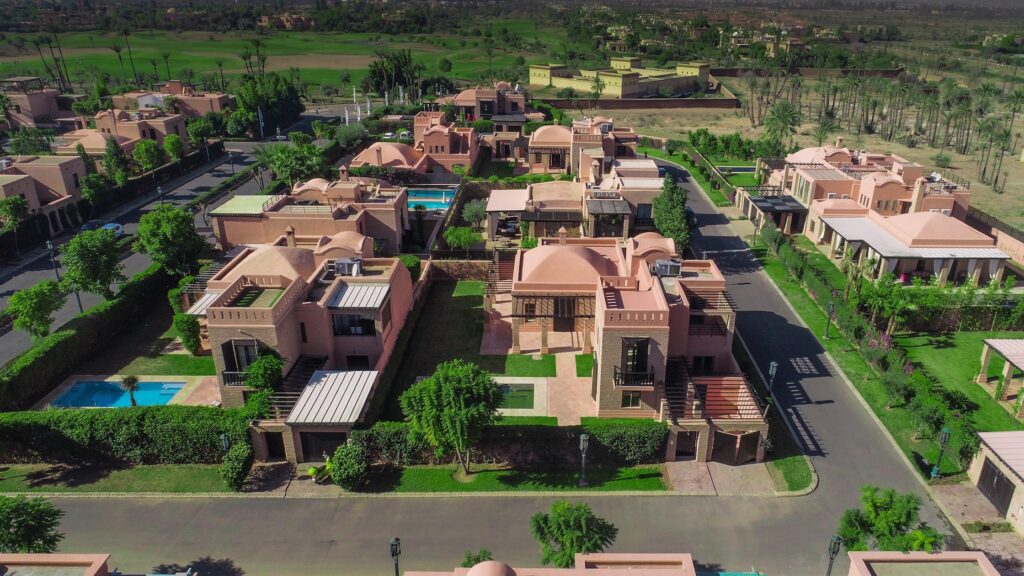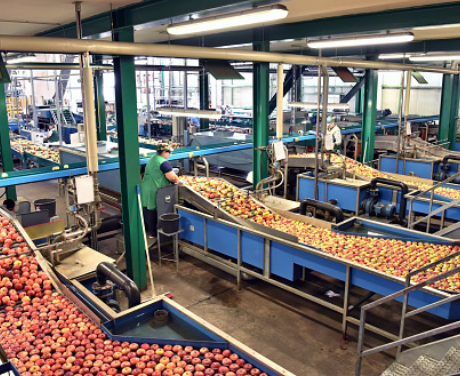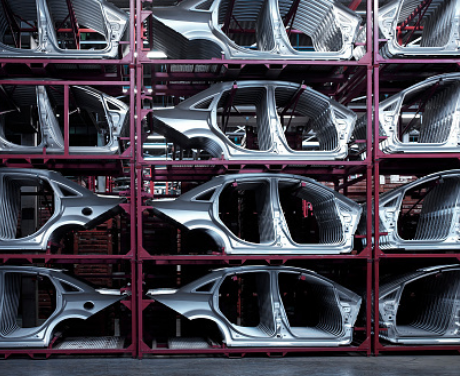Morocco Real Estate Investment Guide

Morocco offers investors a unique opportunity to invest in real estate. Over the last few years, its economy has significantly improved, placing the north African nation in the top 5 wealthiest economies on the continent.
This guide focuses on critical factors when investing in Morocco’s real estate.
Table of contents
Geography and Location
Morocco overlooks the Mediterranean Sea to the north and the Atlantic Ocean to the west. It has land borders with Algeria to the east and the disputed territory of Western Sahara to the south.
Morocco also claims the Spanish exclaves of;
Ceuta, Melilla and Peñón de Vélez de la Gomera, and several small Spanish-controlled islands off its coast.
It spans an area of 446,550 km2 (172,410 sq mi).
Morocco Population, People and Language
According to CAHF, Morocco has a population of 37.34 million (2021), with a growth rate of 1.17%. 63.8% of the population lives in urban areas. The country has a population density of 83 per sq. km.
The median age is 29.5 years. Morocco’s official languages are Arabic and Berber. French is widely used for business, government and diplomacy.
Population Density
The nations population density falls in the median range.
Median Age Group
Morocco’s population is among the youngest ones in Africa.
Population Growth
The growth is among the lowest in the developing world.
Urban Population
Urbanisation is one of the highest on the continent.
Morocco Real Estate and Investing
The growth of the real estate industry in Morocco was negatively affected by the 2020 pandemic. This period saw a significant decline in property transactions, with the most affected sector being the hospitality industry.
The industry has, however, been positively impacted by the resolve of the Moroccan Government to boost the real estate sector. The recent introduction of real estate investment trusts (REITs) will help to structure the property market. They will also increase price transparency and thus ignite a valuable circle of real estate investment in Morocco.
The expansion of several international hospitality companies planning to establish their hotel and rental businesses in Morocco is a valuable boost to the real estate and tourism industry and the economy.
The distinct architectural style of Moroccan riads (traditional Moroccan homes) remains an attraction to foreigners looking for holiday homes. However, the market is gradually changing, with many new projects on offer to meet the demand for residential and commercial property.

Rental Yield:
Rental yields average from 6% to 8%
Other Investor information
- Ease of Doing Business Regional – 2021: 3rd
- Ease of Doing Business International – 2021: 53rd
- Pro Landlord
- Foreigners are allowed to own land in Morocco, except for areas designated for agricultural purposes.
- Dirham, Morocco’s currency, is stable.
Morocco Taxation
- Capital Gains Tax – from selling property are subject to 20%
- Corporate Income Tax (CIT) – 31% (Over 1m MAD)
- Withholding tax (WHT) – On interest paid to non-resident entities, payments of services rendered by non-resident entities are set at 10%.
- Professional Tax – On the rental value of fixed assets and business premises (rented or owned) is 10% to 30%, with an exemption for the first five years of activity.
- No inheritance tax or stamp duty
Morocco Economy
Morocco has the 5th largest economy in Africa. Modern sectors like tourism and telecommunications are significant contributors to its economic growth. It has been a relatively peaceful country, which has boosted its economic growth in years past. Its proximity to Europe is an added value.
GDP
The national GDP of Morocco was $140 Billion in 2021, with GDP Per capita at $3857. Due to the effects of the Covid 19 pandemic, the annual growth rate was -7.17% in 2020.
Source: Ubuturo Research
Growth Sectors

Agriculture Sector
Agriculture contributes around 12.2% to the GDP of Morocco.

Manufacturing Sector
The manufacturing sector contributes 25.2% to Morocco’s GDP.

Services Sector
This sector contributes 51.2% to the country’s revenue.
- The primary sector is the services sector, spearheaded by real estate and tourism.
- Thanks to the rich Moroccan soil, the country’s economy depends significantly on agriculture.
- The economy also benefits from the industrial sector, comprising Textiles, leather goods, food processing, oil refining and electronic assembly.
Emerging Sectors
Foreign direct investment has increased growth in many sectors.

Automotive Industry
Morocco’s auto industry has been undergoing steady growth.

Aerospace Industry
Moroccan aerospace Industry posts annual growth rates of 20%
The new sectors that have been growing include:
- The automotive industry, in particular, has been growing in the last decade. Experts predict the country will be able to produce a million cars by 2030.
- Aerospace industry. Morocco has over 140 firms operating in aeronautics and aerospace.
Morocco Resources

Phosphates
Morocco has the world’s largest known reserves of phosphates.

Grapes
Moroccan farmers grow several varieties of grapes such as the Carignan, Grenache, and Cinsaut.

Fish
The fishing sector accounts for about 16% of the country’s exports.
Natural resources have always played an important role in the Moroccan economy. These include;
- Morocco’s phosphate reserves account for almost 75% of all phosphate reserves globally.
- Besides phosphates, Morocco’s mineral wealth extends to; Iron, zinc, lead, copper, fluorine, silver, manganese, salt, cobalt and gold.
- Grapes. The abundance of grapes supports Morocco’s wine industry. The wine industry is a significant employer in Morocco. It has about 20,000 people in its labour department.
- Fish. Morocco’s fish reserves are one of the country’s crucial natural resources. Some fish species in Morocco’s waters include carp, black bass, and trout.
- Beautiful scenery.
- Arable land.
Morocco Tourism
The tourism industry contributes 11% of Morocco’s GDP. However, like many other places, it has been dramatically hit by the 2020 pandemic.
After the pandemic closures, Morocco was the first to re-open air travel in Africa. With the ease of pandemic restrictions, the nation is experiencing a recovery in the tourism industry, which saw revenues increase by 223% in the 3rd quarter of 2021. This has subsequently boosted the real estate industry and economy.
The country’s proximity to Europe still makes the nation one of the strongest tourism markets in Africa.
Final Thoughts
Morocco may be the country to consider if you seek a new investment opportunity. The economy is among the top 5 in Africa. The real estate sector offers high rental yields for a good return on investment, and the ease of doing business is remarkable.
